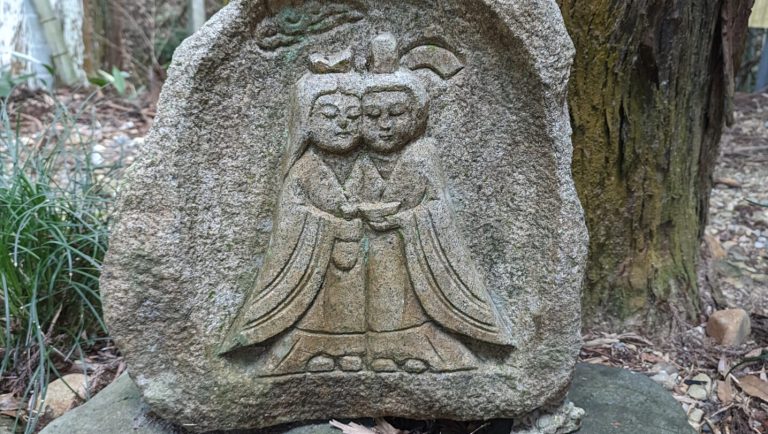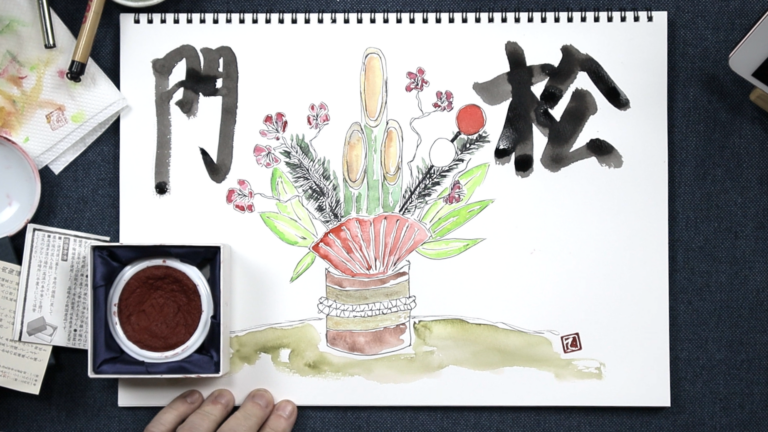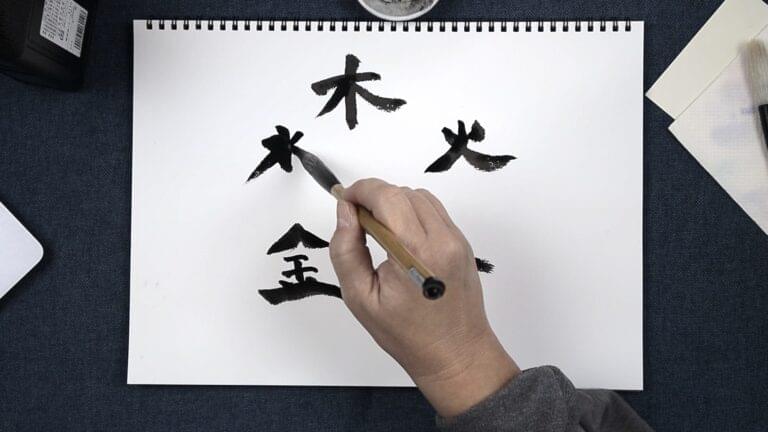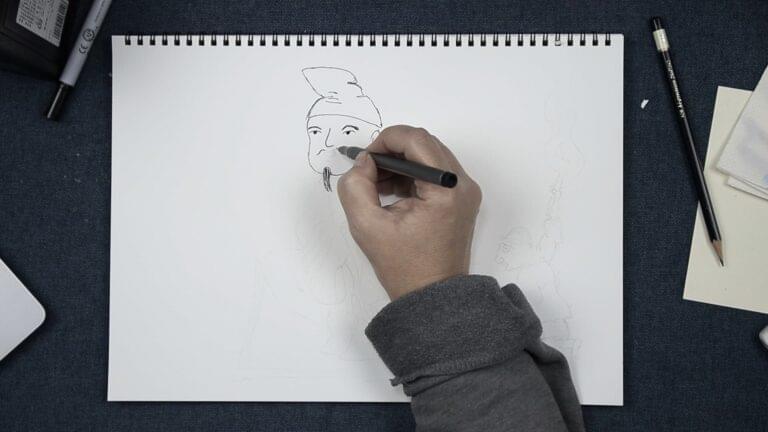Hey hey, this is Thersa Matsuura and you’re listening to Uncanny Japan.
Today I’m going to do something a little different, again. I’m going to give you some real yōkai and paranormal news. Not current news, but stories that were actually published in newspapers during the late 1800s — and not in tabloids either, but in regular ol’ papers. And they are absolutely delightful to read.
Edo Era: The Golden Age of Yokai News
Before I tell you about a couple of these old articles I found and translated, a little history which you might already now, but just in case: You’ll sometimes hear the Edo Era (1603-1867) referred to as The Golden Age of Yōkai. It was a peaceful time and many creatives blossomed. Let me give you some example of things that were born or saw their heyday during the Edo Era: kabuki, Noh, and bunraku theater, ukiyoe woodblock printing, ikebana, the tea ceremony, calligraphy and ink painting, and of course literature.
Kibyoshi: Yellow-Covered Books
Speaking of literature, there was something called kibyoshi or yellow-covered books that came about during the Edo Period. They are quite unique and should probably get an episode all to themselves, but a bit about them: these yellow-covered booklets were small, pocket-sized and featured woodblock printed illustrations alongside text. Some say they were the precursors to present day manga. Kibyoshi were often satirical and humorous. To tell these sensational stories the authors and artists would often employ yokai and other mythical creatures as characters. The little books were cheap, fun, and sold like hotcakes. They no doubt helped spread the yokai love.
Toriyama Sekien and his Yokai
Then there was the great Toriyama Sekien who traveled around Japan, collected all sorts of mythical beasties and their legends, then ended up cataloguing over two hundred of them in his woodblock printed books. Toriyama Sensei had only intended to make one book (The Illustrated Demon Horde’s Night Parade, also called The Illustrated Night Parade of a Hundred Demons), but that first book sold so well, he made three more. He even invented some of his own yokai. You’ll find a lot of the yōkai you love today based on his artwork. So there’s another reason the Edo Era garnered the title The Gold Age of Yokai.
Meiji Era: Modern Times
Now after the Edo Era, came the Meiji Jidai (from 1868 until 1912). This time was considered the modern era. However, even though there were plenty of developments in science, technology, and medicine, all those creatures and spirits, yokai and mysterious happenings didn’t just disappear overnight. These otherworldly phenomenon continued to live in people’s hearts, minds, imaginations and homes long after this so called modern era arrived.
During the Meiji period a new kind of newspaper was born, too. But not all the news was — strictly speaking — factual. Alongside articles about upcoming events and tragic floods and fires, there were articles about incidents involving yokai and yurei and other creepy and strange happenings.
It was during the Meiji Era that newspapers began popping up all over Japan, big city ones as well as smaller local editions. As you can imagine the smaller papers focused a lot on local news that was collected and written by reporters who were residents of the town and reported what they heard. It wasn’t their job to investigate the story, just write it. And this makes for some charming news articles.
Let me share three with you.
First Article: A Kappa Arrives in Tokyo by Boat
The first one — dated Meiji year 18 (1885), August, 27th — is a short article called: “A Kappa Arrives in Tokyo by Boat”
“A kappa, measuring a little less that one meter (three feet) tall, was captured in Sapporo, Hokkaido. It boarded a boat yesterday and arrived at the riverside of Fukagawa Saga Town. It is said to be four years old. The owner of the Soba noodle shop, Higashi-zato-an, in the same town the creature arrived in, bought the kappa and is planning to show it in a misemono, sideshow exhibit.”
The article gave no indication about whether the kappa was alive or not.
Second Article: I’m a Messenger of a Tengu
The second story doesn’t even have a date and is only a couple sentences long, but had me asking so many questions, I wanted to share. It’s titled: “I’m a Messenger of a Tengu (Boku wa Tengu no Tsukai).”
“The other day a young boy was found standing in the pouring rain. He was, however, completely dry. When asked, he said that he learned how to do this trick from a tengu and that he was a tengu’s messenger.”
That’s it. Why did the reporter not ask more questions?
Third Article: The Mysterious Tale of a Turtle
Okay, number three is a much longer piece from the Kainan Newspaper in Osaka, Meiji Year 18, January 8th. It’s called “The Mysterious Tale of a Turtle” and sounds quite like a folktale, but it’s not, keep in mind this is an actual newspaper article.
It starts poetically enough.
“According to a poem by Asami Oe, Urashima rescued a turtle and was rewarded with a wife. A similar or the same story can also be found in the Japanese Nihon Shoki, where as witnessed by the people of the Yosha District in Tanba Province, a fisherman named Urashima Ko rescued a large turtle and in return, he was introduced to a beautiful woman. Together they entered the sea and sailed to the faraway mythical island of Horai where they enjoyed the rest of their long days in utmost pleasure listening to the beautiful music of the immortals.
This centuries old, moss-covered tale will forever remain a mystery to us. Did it really happen? Was it all made up? But keeping in mind that turtles and tortoises can live to be hundreds of years old, surely it is plausible, for they have seen and experienced many things we can’t imagine. A sea turtle can, as the following account suggests, give its grace to another thus extending their life.
In Osaka in the Higashi Ward, there is a second hand clothing store owned by a man named Osato Yohei. As an adult Mr. Osato Yohei was a fine and respectable person, admired by many. When he was young, though, Yohei had a strange inclination for turtles. Whenever he found a turtle for sell, he just had to buy it. But he rarely kept them and instead delighted in releasing them either in the pond at Tennoji Temple or into the moat at Nijō Castle. The exact number of turtles he set free is unknown.
Now, as an adult we find that Yohei has one older 18-year old son named Yogorō from his first wife. He lives with his second wife together with their two children: an older daughter (Osame) who turned fourteen this year and a son (Yojirō) who is eleven. The wife, it is reported, held great hatred toward the first son, Yogorō, and treated him very badly. Yogorō was very kind hearted, though, echoing the character of his father and continued to treat her as his real mother, never acting out toward her or being mean in any way.
One day the second mother skeemed to leave the entire business and estate of her husband Yohei to her own son (Yojiro, the one who just eleven). Still, she worried because Yogoro was older and might under some loophole inherit it all because he is her husband’s oldest son. This possibility kept her targeting poor Yogorō and making his life miserable.
Over time Yogorō, having nowhere to channel his hurt and sadness began participating in some illicit behavior. This involved occasional visits to the red light district in town. Sometimes he even stole a little money from the shop to pay for these excursions. In time, his second mother found out about these indiscretions and got very angry, telling her husband, Yohei, about his son’s actions.
Yohei was distraught and went to relatives for advice. Not understanding the situation at home between the boy and his mother-in-law, they told him to punish Yogorō, which he did by scolding him harshly. Now Yogorō had nowhere to turn and was deeply depressed. One night, he wandered the streets trying to find a solution to his problem. But he could think of nothing. Before he knew it, dusk turned to dark and the moon rose. Sometime around ten pm he found himself near the Nijo castle and he stopped.
Yogorō looked down at the deep blue moat surrounding the high stone walls that shone eerily in the moonlight. He knew what he had to do. If he took his own life, then his step mother would be confident that her own son, Yojirō, would inherit all his father’s wealth, and that would make her a happy person. Her being happy would be better for everyone. It was his only choice.
Yogorō had heard rumors about this particular moat. It was shaped like mortar, meaning that those who fell or leapt in would be unable to climb back up the steep sides and would invariably drown. This was the perfect place to end his life, he decided. Yogorō turned to face home and put his hands together in prayer. He apologized to his family for all his acts of disobedience. Then when there was no one walking nearby he jumped into the water.
He felt his spirit sink to the bottom of the moat, but something was floating there and lifted him to the surface again. It seemed to be saying “Hurry and go ashore!” After coming to the surface again, Yogorō saw that it was a very large turtle. No doubt older than he was. Was it one of the turtles his father had set free? With a renewed sense of life, the young man tried to climb the slippery stone walls. He saw the turtle disappear under the surface of the water just as a man from Awaza was passing by with a lantern spotted him and helped him out.
The man who rescued Yogorō retuned him to his home soaking wet and explained what he’d seen. Both his father and step mother were in great shock that he’d tried to take his life. He explained everything and even the part about the mysterious turtle that saved his life. His father completely forgot his anger at his son and his step mother was very ashamed of her behavior and showing real remorse gave him a heartfelt apology. They were so grateful to the man who had rescued Yogorō, that they held a grand celebration for the entire town of Awaza where he was from.
Afterward, both Yogorō and his father talked often about that mysterious turtle and could it have saved the youth’s life because Yohei as a child had saved its life?
Then end.
Thank you for listening, talk to you in two weeks, bye bye~






